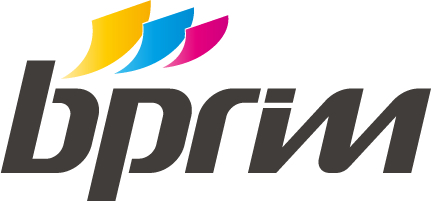Cost-Benefit Analysis Definition, Steps, How to Do?
.jpeg)
While CBA has its limitations, its structured approach makes it a cornerstone of effective decision-making. By comparing total costs with total benefits, CBA ensures that resources are used wisely, risks are accounted for, and long-term profitability is prioritized. However, it’s important to understand the limitations of CBA – not all decisions can be reduced to a purely financial analysis. Creately provides a variety of features to enhance your cost-benefit analysis process. With visual collaboration tools, your team can work together in real time to create and edit diagrams. The platform offers customizable templates specifically for cost-benefit analysis, enabling efficient organization.
Step 5. Calculate total costs and benefits
Estimate the future value of your project costs and benefits and think about all the non-financial benefits that a project proposal might bring. There’s a variety of cost estimation tools and techniques that can be utilized such as a cost breakdown structure, parametric estimating, or cost estimating software. Before you can know if a project proposal might be valuable, you need to compare it to similar past projects to see which is the best path forward. Check their success metrics such as their return on investment, internal rate of return, payback period and benefit-cost ratio. However, it’s crucial to be aware of the limitations and challenges of CBA. Although it provides a structured method for decision-making, its accuracy relies heavily on the precision of forecasts and assumptions.
Before taking on a new project, prudent managers perform a CBA to evaluate all the potential costs and revenues it might generate. The analysis’s outcome determines whether the project is financially viable or whether a company should consider other alternatives. A cost-benefit analysis doesn’t always involve concrete numbers or measurements. Consultants or analysts, for example, could create models to assign a dollar value to intangible factors, such as the benefits and costs of living in a particular town.
By designing a new process and getting buy-in from the C-Suite team, we helped one of the largest smartphone manufacturers in the world reduce software design time by 75%. In the case of the park, the city officials would need to identify the city’s main goals with this initiative. They would need to identify (and agree on) their scope, timeline, and metrics for success (and failure!). Our online Gantt charts have features to plan your projects and organize your tasks, so they lead to a successful final deliverable. If things change, and they will, the Gantt is easy to edit, so you can pivot quickly. After enrolling in a program, you may request a withdrawal with refund (minus a $100 nonrefundable enrollment fee) up until 24 hours after the start of your program.
A benefit-cost ratio (BCR) may also be computed to summarize the overall relationship between the relative costs and benefits of a proposed project. Other tools may include regression modeling, valuation, and forecasting techniques. For projects or business decisions that involve longer timeframes, cost-benefit analysis has a greater potential of missing the mark for several reasons. For one, it’s typically more difficult to make accurate predictions the further into the future you go. It’s also possible that long-term forecasts won’t accurately account for variables such as inflation, which can impact the overall accuracy of the analysis.
ProjectManager is award-winning project management software with the tools you need to realize the potential of your project. As explained above, the rate of return is used to calculate the present values of your project’s costs and benefits, which are needed to find the cost-benefit ratio. The main goal of cost-benefit analysis is to determine whether it is worth undertaking a project or task. This decision is made by gathering information on the costs and benefits of that project.
Other than this major issue, there aren’t really any cons of cost benefit analysis. Cost benefit analysis, also known as benefit cost analysis, is a tool for comparing the costs of a decision with its benefits. The tool is often used in the business world, where the decision can be anything from developing a new product, to changing an existing process.
How to Establish a Framework
The goal is to determine whether the benefits outweigh the costs and if the project will deliver value over time. cost benefit analysis These project costs and benefits are then assigned a monetary value and used to determine the cost-benefit ratio. However, a cost-benefit analysis might also involve other calculations such as return on investment (ROI), internal rate of return (IRR), net present value (NPV) and the payback period (PBP). Cost-Benefit Analysis is an indispensable tool for businesses looking to make data-driven decisions. By systematically evaluating costs and benefits, it helps leaders prioritize investments, optimize resource allocation, and mitigate risks.
The discount rate (r) is a key factor in calculating the Net Present Value (NPV) because it reflects the time value of money—the idea that money today is worth more than the same amount in the future. By using these metrics, a cost-benefit analysis helps ensure better resource allocation and supports strategic decision-making across industries. It also helps evaluate the feasibility and viability of a course of action before committing significant resources. This organizes all types of costs—direct (like equipment and labor), indirect (overhead or utilities), opportunity costs, and intangible costs (e.g., environmental impact). The projected sales over the first year are $500,000, leading to a gross profit of $300,000. After factoring in ongoing costs, such as customer support and warranty services, they still see a net benefit of $250,000.
.jpeg)
Benefits of Cost-Benefit Analysis
- The second step of a cost-benefit analysis is to determine the project costs.
- We confirm enrollment eligibility within one week of your application for CORe and three weeks for CLIMB.
- The benefits of a cost-benefit analysis, if done correctly and with accurate assumptions, are to provide a good guide for decision-making that can be standardized and quantified.
- I was so impressed at the final product they created, which was hugely comprehensive despite the large scope of the client being of the world’s most far-reaching and best known consumer brands.
- All programs require the completion of a brief online enrollment form before payment.
This step involves directly comparing the monetary values assigned to the costs and benefits of the project to determine whether the benefits outweigh the costs. Whatever method is used to quantify the costs and benefits, especially for non-monetary goods, the process should be transparent. This helps keep decision-makers accountable for their choices and consistent across evaluations. This is a simple cost-benefit analysis that relies on the cost-benefit ratio to establish the profitability of this project. In other scenarios, you might also need to calculate the return on investment (ROI), internal rate of return (IRR), net present value (NPV) and the payback period (PBP). In addition, it’s advisable to conduct a sensitivity analysis to evaluate different scenarios and how those affect your cost-benefit analysis.
What Are the Five Steps of Cost-Benefit Analysis?
Because many companies have many geographical locations spread across the world, it can be impossible to get everybody in the same room at the same time. Map out when you expect the costs and benefits to occur and how much they will be. The timeline helps you align, define, and track the expectations of all interested parties. In addition, the timeline can help you plan for upcoming costs and revenue impacts, which will let you manage and adjust as necessary as things change. If the cumulative benefits of a potential project are anticipated to outweigh the incurred costs, a company is more likely to decide in favor of proceeding with undertaking the project.
It assists in establishing the total profitability of a project or decision, offering a precise depiction of the project’s worth in current dollar terms. The California High-Speed Rail Authority used CBA extensively to estimate the cost and benefits of the high-speed rail project connecting major cities in California. This analysis helped prioritize phases, secure funding, and optimize resource allocation by understanding expected economic benefits. CBAs are critical in industries like project management, healthcare, and business strategy, where resource allocation and informed decisions are central to success. This article will explore what a CBA is, how it works, and walk you through the steps, pros, and cons to help you make better-informed decisions for your business or project. A company decides to invest $20,000 in a comprehensive training program for its sales team.
By thoroughly identifying and categorizing these costs and benefits, you can ensure a comprehensive analysis that aids in making informed decisions. This approach allows for a more nuanced understanding of the project’s impact, ultimately supporting a well-rounded evaluation. Controversial AspectsWhen thinking about the most controversial aspects of cost benefit analysis, all paths seem to lead to intangibles. Concepts and things that are difficult to quantify, such as human life, brand equity, the environment, and customer loyalty can be difficult to map directly to costs or value. With respect to intangibles, Dr. Kaplan suggests that using the cost benefit analysis process to drive more critical thinking around all aspects of value—perceived and concrete—can be beneficial outcomes.
Related posts
Margin of Safety Formula Guide to Performing Breakeven Analysis
Especially, when these cost reductions are balanced against any costs required to implement the sust
Guide to Understanding the Comprehensive Income Statement
Sophisticated investors and lenders will read closely the notes to the financial statements. If the
The Benefits of Outsourcing Bookkeeping for Small Businesses
They should be willing to answer any questions you have and provide clear details about how they wil

